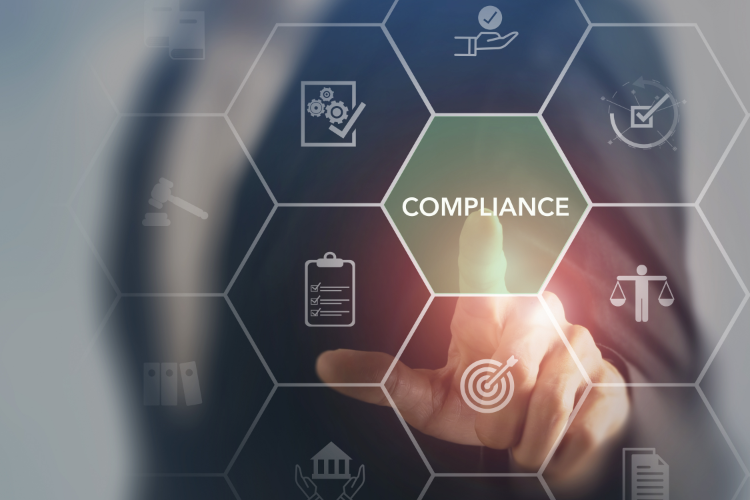Healthcare organizations must follow 629 different rules and regulations. Maintaining good standing typically falls to a compliance analyst or officer while smaller hospitals and health systems may not staff such roles.
Adherence to various regulations, standards, and guidelines isn’t optional. Healthcare organizations must ensure the delivery of safe and effective healthcare services, which demands focus and organization. In this blog, we’ll outline the seven key components of compliance in healthcare and how MedTrainer helps manage these processes.
What is Healthcare Compliance?
Healthcare compliance is the process of following the laws, regulations, and ethical standards that govern the healthcare industry. It ensures that healthcare organizations and professionals adhere to guidelines that protect patient safety, maintain data privacy, and uphold the integrity of medical practices. Compliance is essential for operating within the legal framework, providing high-quality care, and maintaining the trust of patients and the community.
The Seven Components of Compliance in Healthcare
The Office of Inspector General (OIG) recommends seven elements of an effective compliance program. These steps are generally applicable across the entire compliance spectrum.
- Written Policies and Procedures: A code of conduct and compliance policies are critical elements of any compliance program. The compliance program should also require that all the entity’s policies and procedures incorporate a culture of compliance into its day-to-day operations.
- Compliance Leadership and Oversight: To be effective, a compliance program should have a board and senior leadership that understand its value and are committed to its success. One of these senior leaders should be the Compliance Officer.
- Training and Education: The compliance officer, with the support and aid of the Compliance Committee, should develop and coordinate a multifaceted education and training program specific to the needs of and risks presented by the entity.
- Effective Lines of Communication with the Compliance Officers and Disclosure Program: An open line of communication between the compliance officer and entity personnel (including contractors and agents) is critical to the successful implementation of a compliance program and the reduction of any potential for fraud, waste, and abuse.
- Enforcing Standards: Consequences and Incentives: For a compliance program to be effective, the organization should establish appropriate consequences for instances of noncompliance, as well as incentives for compliance.
- Risk Assessment, Auditing, and Monitoring: Although identifying and addressing risk have always been at the core of compliance programs, in recent years OIG, the compliance community, and other stakeholders have come to recognize and place increasing emphasis upon the importance of a formal compliance risk assessment process as part of the compliance program.
- Respond to Detected Offenses and Developing Corrective Action Initiatives: Compliance programs should include processes and resources to thoroughly investigate compliance concerns, take the steps necessary to remediate any legal or policy violations that are found, including reporting to any Government program agencies or law enforcement where appropriate, and analyze the root cause(s) of any identified impropriety to prevent a recurrence.
These components work together to create a comprehensive compliance program that helps healthcare organizations meet legal and ethical standards while delivering high-quality care to patients.
Follow the Seven Components of Healthcare Compliance
MedTrainer, with its comprehensive suite of tools and resources, offers valuable support to healthcare organizations as they undertake this critical process, ultimately contributing to improved compliance and patient care. By systematically addressing compliance risks, healthcare organizations can foster a culture of accountability and ensure the delivery of safe and high-quality healthcare services.
The platform includes robust document management capabilities, making it easier for organizations to maintain and update policies and procedures as needed to remain in compliance with the latest regulations. The reporting and analytics tools allow organizations to track and monitor compliance efforts, making it easier to identify areas of concern and prioritize remediation activities.
MedTrainer’s learning management system (LMS) enables organizations to deliver compliance training and education to staff, ensuring that employees are well-prepared to meet compliance requirements. The incident management module helps organizations respond effectively to compliance incidents, ensuring that issues are addressed promptly and thoroughly.

WEBINAR: Identifying Compliance Priorities To Make a Big Impact
 Learning
Learning